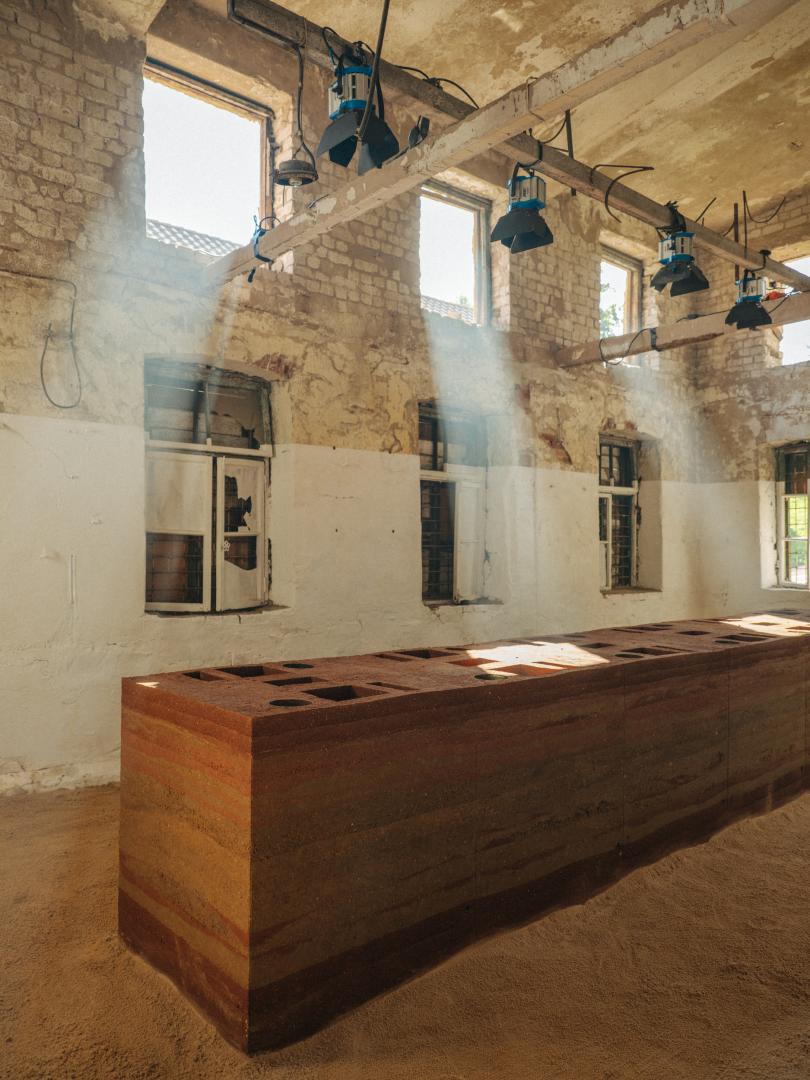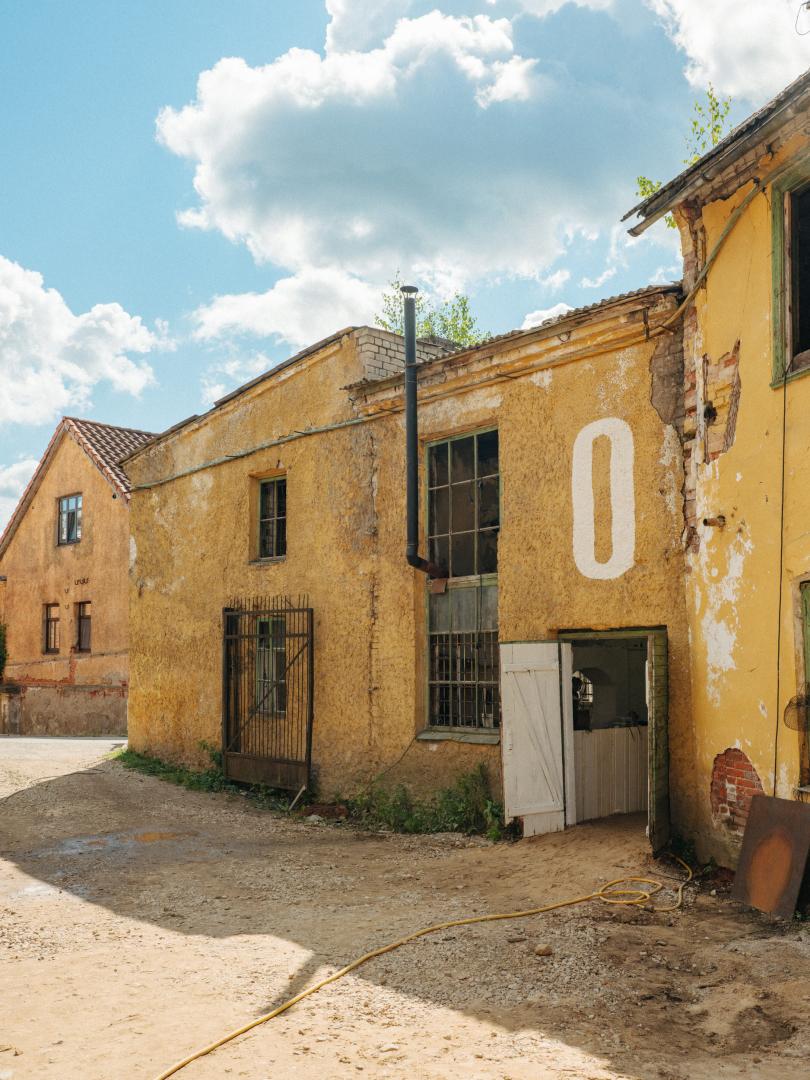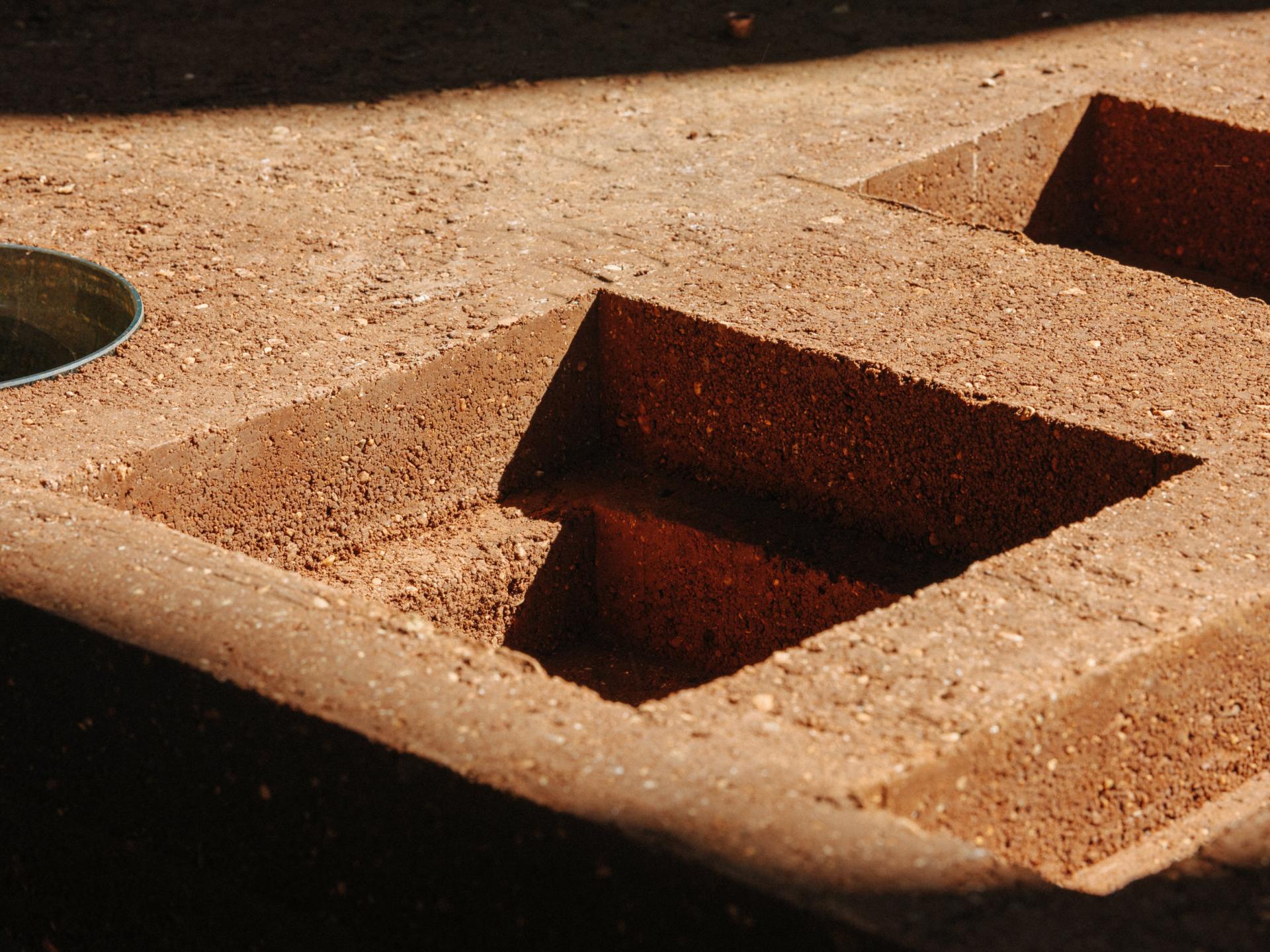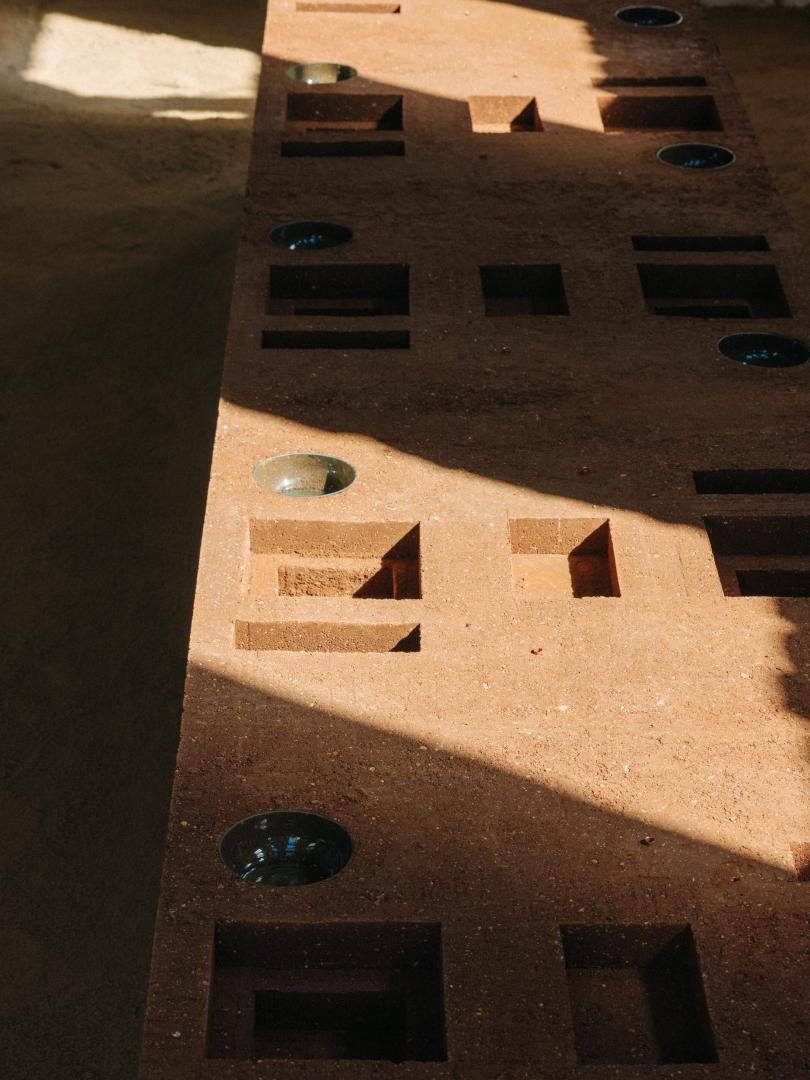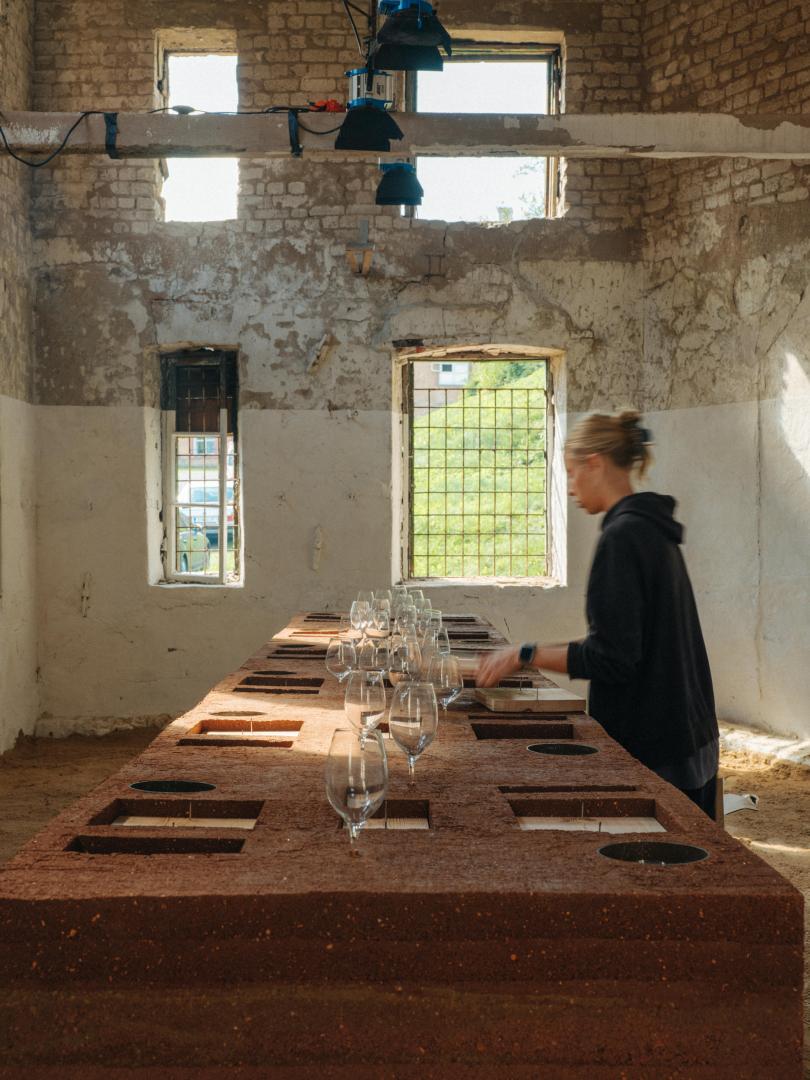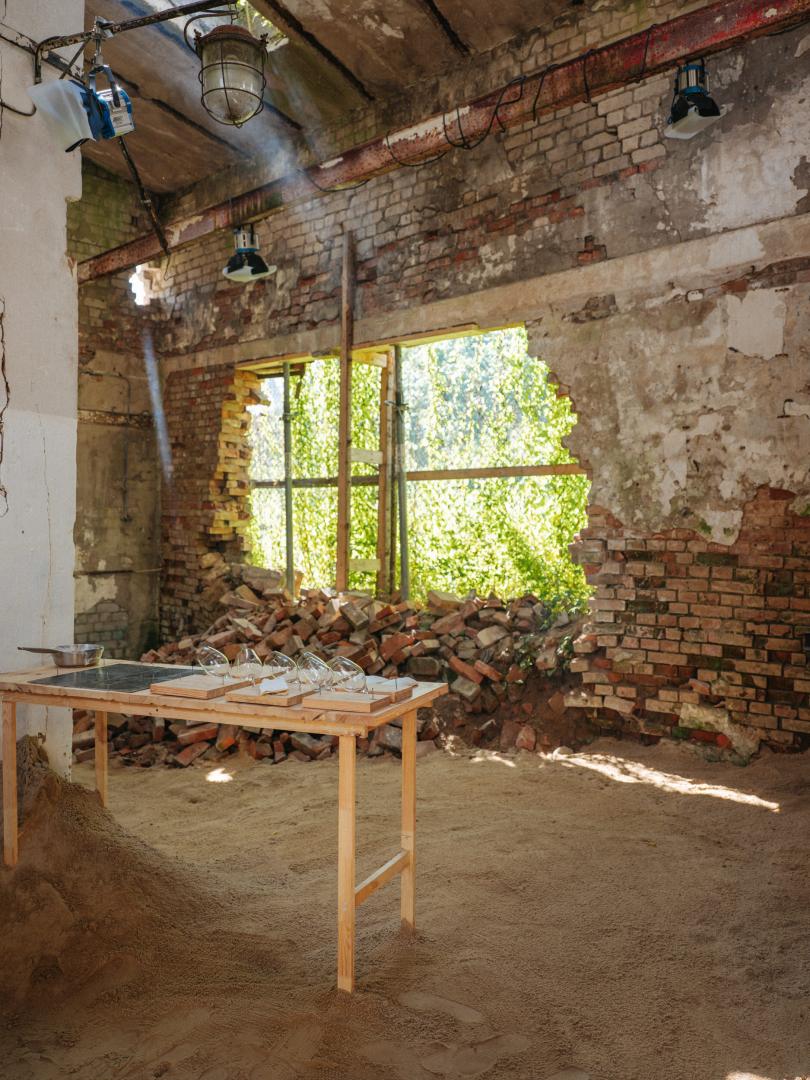Restaurant 0
Basic information
Project Title
Full project title
Category
Project Description
Restaurant 0 is a pop up space designed for an Estonian TV show with the aim of using the design to raise awareness of the ecological footprint of the construction industry.
The temporary restaurant, which seats 12 guests, was built within 7 days into the ruins of a 19th-century building complex in Southern Estonia. The studio kuidas.works proposed a conceptual centerpiece for the occasion – a 15-ton rammed earth table.
Geographical Scope
Project Region
Urban or rural issues
Physical or other transformations
EU Programme or fund
Which funds
Description of the project
Summary
Suppose a design studio is generously handed the opportunity to explore the full range of possibilities of creating a restaurant experience from scratch with zero budget and without leaving a remarkable footprint. In that case, naturally the question "how?" arises. By recycling the waste, the footprint of fast consumption can be reduced, however, even when materials are reused, the result can still end up in landfills or incineration, and the recycling process itself can also turn out quite costly or unresourceful. Elaborating that point of view, the design team decided to extend the 0-expense paradigm in the TV show by proposing a conceptual centerpiece for the restaurant – a 15-ton rammed earth table.
Last summer, the slow-tech spatial design studio Kuidas.works* (kuidas - how in Estonian) was invited to participate in an Estonian national television TV series "Restaurant 0", that aimed to complete a rather challenging task - to build a restaurant in 7 days with 0-cost and smart recycling. The restaurant was designed and built into the ruins of a 19th century sausage shop in the Old Town of Viljandi, Estonia. The project was announced as one of the laureates at the annual Estonian Architectural Awards 2021.
The table was an exploration into the simplest, ancient methods - created using the rammed earth technique, using only hand tools and natural materials. Tons and tons of clay was first dried in the sun, then sieved through an old spring mattress frame, carried bucket by bucket into the framework and finally rammed into a standing height dining table. The earth was mainly of local origin and was sourced from a nearby clay quarry. Typical of the Devonian era, Southern Estonian earth fluctuates in yellow and ochre undertones. The darker red clay was also from across the southern border: Lithuania. Other main materials used in the project were sand to level the floor and lime paint to neutralize the walls covered in graffiti.
Key objectives for sustainability
Suppose a design studio is generously handed the opportunity to explore the full range of possibilities of creating a restaurant experience from scratch with zero budget and without leaving a remarkable footprint. In that case, naturally the question "how?" arises. By recycling the waste, the footprint of fast consumption can be reduced, however, even when materials are reused, the result can still end up in landfills or incineration, and the recycling process itself can also turn out quite costly or unresourceful. Elaborating that point of view, the design team decided to extend the 0-expense paradigm in the TV show by proposing a conceptual centerpiece for the restaurant – a 15-ton rammed earth table.
The centerpiece of the restaurant - a rammed earth table was an exploration into the simplest, ancient methods - created using the rammed earth technique, using only hand tools and natural materials. Tons and tons of clay were first dried in the sun, then sieed through an old spring mattress frame, carried bucket by bucket into the framework, and finally rammed into a standing height dining table. The earth was mainly of local origin and sourced from a nearby clay quarry. Typical of the Devonian era, Southern Estonian earth fluctuates in yellow and ochre undertones. The darker red clay was also from the region: Lithuania.
The used volumes of clay and sand could easily be reused, but even if the rammed earth table were left in ruins, the materials used would not burden the environment, and the table will slowly but surely fall apart and disappear. In total, less than 1% of the materials - just the tableware - require recycling later on. Materials used for the tableware were wooden trays made from old floorboards from the site, bowls cut from 3-liter glass jars, steel plates, and sleeves of copper tubes used as drinking glass stands.
Key objectives for aesthetics and quality
The TV-show had a strong message, and we wanted to emphasize it with spatial design. The idea was to create a focus point in the form of the table. Everything around it, including the recessed tableware, walls covered in white lime paint and the floor leveled with sand, was to be as minimal as possible. When it came to the tableware, it was a collaboration between the cooks and designers, as the cooks gave a precise input of what foods were to be served and how during the 4-course dinner. It was thoroughly functional and perhaps ascetic, but it fit the bill perfectly in terms of the whole concept.
The table was to host 12 guests for a one-night-only 4-course dinner. The standing table aimed to support the idea of presence and awareness, adding attentiveness to the dining experience as it won't let you forget where you are and why. Coming out of the comfort zone is the prerequisite for understanding ecological problems, which was the undertone of the whole TV show. The design does not have to be about comfortability. It can and should be used as a tool to draw attention, as the design and building industry has one of the heaviest footprints. So whether turning to simple technology is convenient or inconvenient, or whether there are other solutions, is the central question of the concept of this work.
Key objectives for inclusion
One idea of the project was to create a space that would draw attention to the simple and ancient technologies, in this case, using rammed earth. The material was harvested from a nearby building site, it was processed right on the plot using no more resources than the sun, time and human effort. So that makes the whole process of building the restaurant very local and affordable. Another aspect of choosing rammed earth for this project was the local heritage of earth building in Southern Estonia.
There are a lot of local traditions around the world which should be researched and emphasized in current projects as there is a lot of wisdom and skill in the older techniques and technologies.
Results in relation to category
After completing the project, there has been a recognizable increase in interest towards the natural building materials and technologies. Especially to our delight in the public building sphere as usage of natural building materials has to grow in volume, in order for it to make an impact.
How Citizens benefit
When looking for the material to be harvested locally, vital clues came from the locals through whom we finally discovered the plot where most of the material came from. At the time of scouting for the earth, we were led upon excavation work done on a plot, where the earth happened to be in perfect ratio for ramming. Thanks to the owner of the plot we were able to use his leftovers.
Physical or other transformations
Innovative character
The innovative character is in the revitalizing of old techniques in an unexpected and unforseen ways. Although the earth building has been a traditional way of building in the South of Estonia, the tradition has largely ceased and it has become very marginal. Our goal is to find a way of how to bring the traditional sustainable building methods back to life, into the mainstream, into the public space, in order to increase the quality of our architectural space as well as to contribute to a more sustainable future.
As of now, the team of kuidas.works is looking for challenges in bringing the low-tech design and building methods into the public space while thinking of it as an upgrade rather than a downgrade. The studio aims to shift the paradigm – to bring natural building methods and materials from marginality to normality.
Learning transferred to other parties
In February 2022 Restaurant 0 received a laureate given out by Estonian Assosation of Interior Architects at annual Estonian Architecture Awards event (https://arhitektuuripreemiad.ee/en/object/restaurant-0/). Lately, there has been an increase in the interest for similar projects as well for rammed earth solutions in Estonian architecture and design scene. We see a strong perspective for rammed earth furniture or solutions even in such demanding sectors as catering or restaurant business. Earth as a building material is universally available and requires almost no pre-or post-recycling. The surface of the tables can be machined with natural formulas such as eggs and linseed oil. (These are still being tested to achieve hygienic and durable surfaces that meet your needs.)

